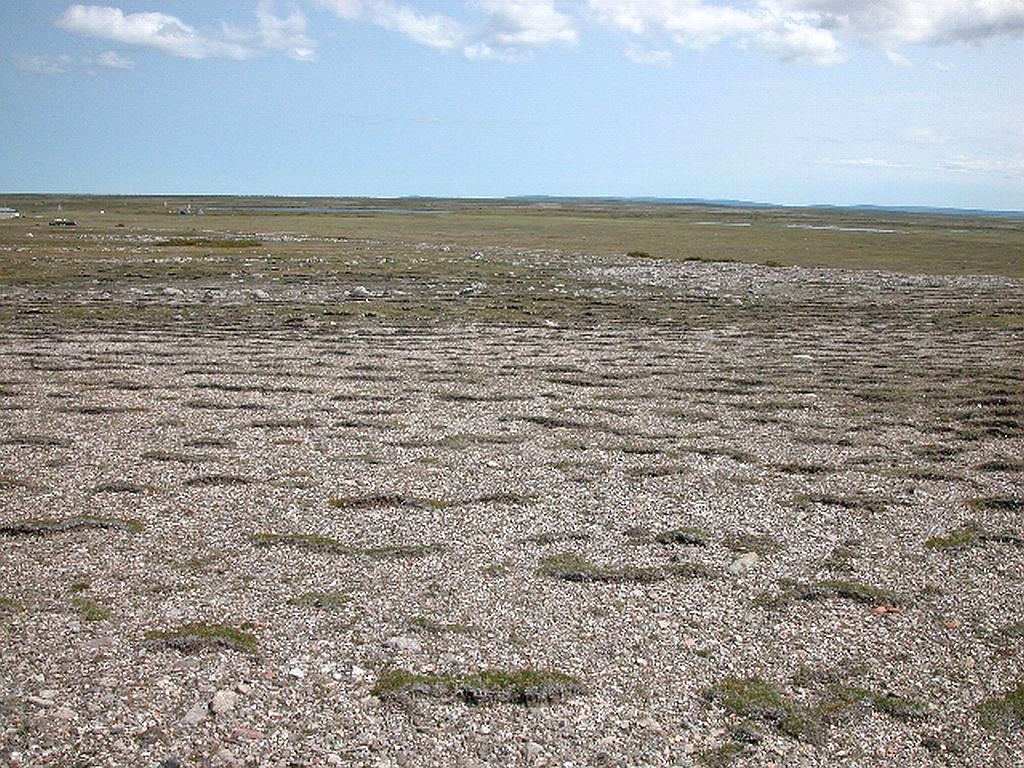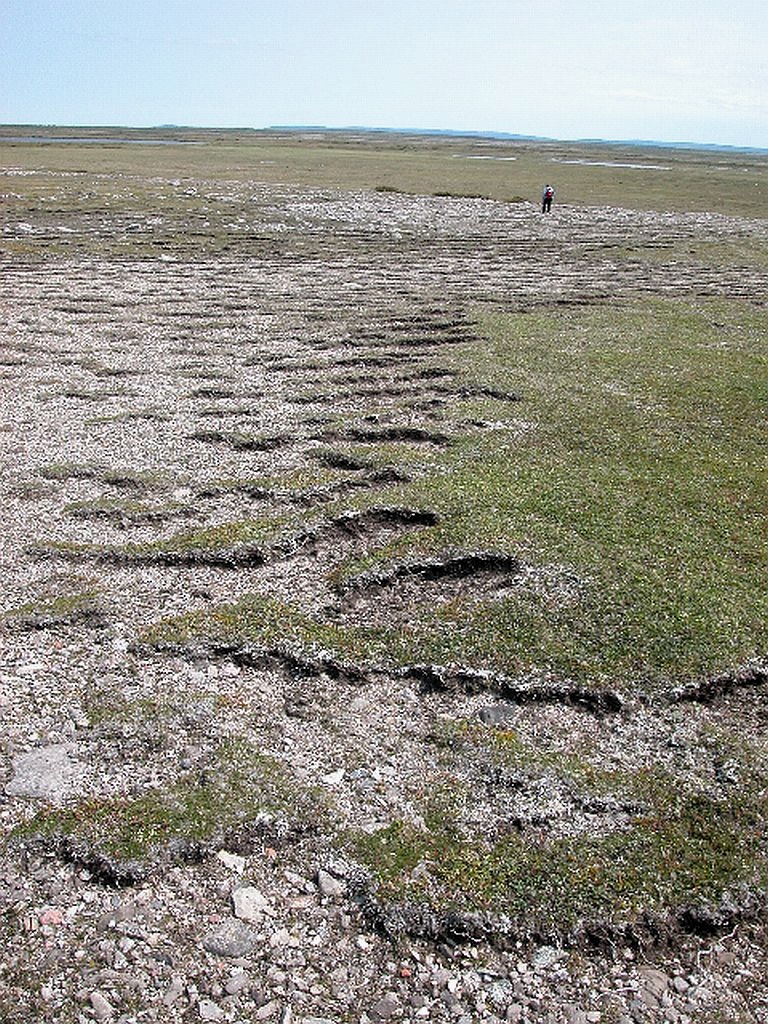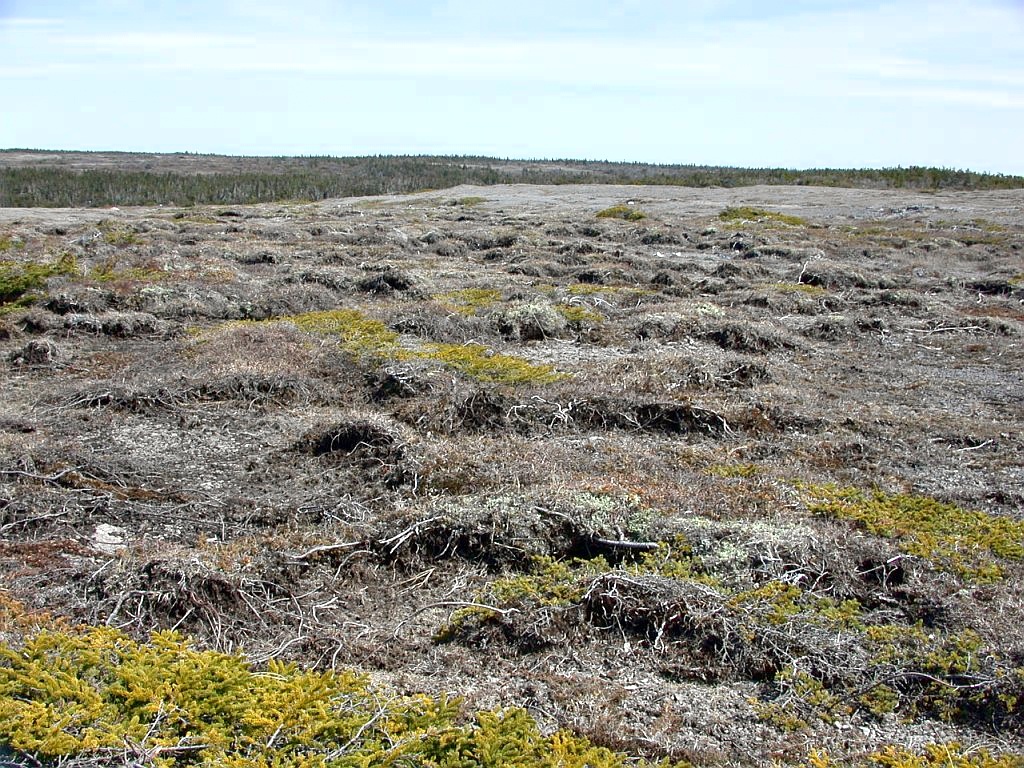








HOME
Wind erosion is a significant factor on the "limestone barrens". It creates striking "deflation surfaces", as the result of soil being blown away over time: [1] Parabolic Vegetational Patterns  A pattern of "arcuate" [ie. curved], isolated, vegetational elements. Cook's Harbour. A wind eroded surface, with surviving low plants arranged in arrays of parabolic clumps, with concave sides towards the prevailing wind. In this case, the wind direction is towards the observer. Photo: Michael Burzynski. [CLICK image to enlarge.]  The transition to an area of arcuate vegetational elements. Cook's Harbour. The result of the erosion of a formerly vegetated surface. Photo: Michael Burzynski. [CLICK image to enlarge.]  The transition to an area of arcuate vegetational elements. Cape Norman. Photo: Michael Burzynski. [CLICK image to enlarge.]  Transition to an area of arcuate vegetational elements. Port au Choix National Historic Site. Photo: Michael Burzynski. [CLICK image to enlarge.]  An area of arcuate vegetational elements on slope. Port au Choix. Photo: Michael Burzynski. [CLICK image to enlarge.]  An area of coarser arcuate vegetational elements. Port au Choix. Photo: Dulcie House. [CLICK image to enlarge.] [2] Blowouts  Sand Blowout. Lower Cove. Dulcie House [L] and Leah Soper [R]. One of the habitats of the rare and endemic Barrens Willow Salix jejuna. Photo: John Maunder. [CLICK image to enlarge.] The ultimate result of "deflation" is bare ground, reduced to gravels or bedrock. It may take a very long time for a deflated area to return to a vegetated state. [PAGE UNDER CONSTRUCTION] ...... ...... ...... ...... ...... ...... ...... ...... ...... ...... ...... ...... ...... ...... ...... ...... ...... ...... ...... ...... ...... ...... ...... ...... ...... ...... |

